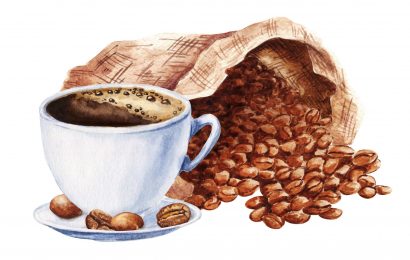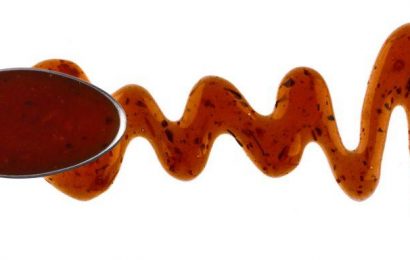If you’ve read a newspaper in the past 40 years, you’re probably already aware that not all fat is created equal. There are three major categories of fat in the diet: unsaturated fat, saturated fat, and trans fat. Unsaturated fats are considered “good” fats because small amounts of these in the diet can improve blood cholesterol levels and slow hardening of the arteries (atherosclerosis) that contributes to high blood pressure and cardiovascular disease.
Saturated fat is considered “bad” fat because it has the opposite effect: It raises low-density lipoprotein (LDL, or “bad”) cholesterol levels and promotes atherosclerosis.
Trans fat is the new bully on the block. It has been shown not only to raise LDL cholesterol levels but also to lower high-density lipoprotein (HDL, or “good”) cholesterol. Both of these effects increase the risk for heart disease, stroke, and high blood pressure. Because heart disease and stroke are the main causes of death among people with diabetes, it is especially important for those with diabetes to focus a discerning eye on the type and amount of fat in the diet as well as the type and amount of carbohydrate.
What is trans fat?
Trans fat is produced when liquid oils are solidified into margarine or vegetable shortening by a process called partial hydrogenation. The term trans fat is a chemist’s way of describing the straight chain of particles that make up this unhealthy fat molecule. (For an illustration, see “Chemical Structure of Fat.”) Believe it or not, the difference between straight-chained fats and bent-chained fats is the difference between healthy and unhealthy fats. Saturated fat likewise has a straight chain, which is why both saturated and trans fats do similar damage in the arteries and are both categorized as “bad” fats. However, as an oil derivative, trans fat is technically still an unsaturated fat, but because it is now shaped differently, it has vastly different properties than the naturally occurring unsaturated fats found in liquid oils, nuts, seeds, and fish.
Partial hydrogenation of any type of oil will result in trans fat formation. (Full hydrogenation of oil does not result in the creation of trans fat, but the end result should be considered a saturated fat.) Common food sources of trans fat are fast foods (such as French fries, chicken nuggets, and fish fillets), prepared and frozen foods (such as burritos, pizza, pancake mix, and croutons), snack foods (such as crackers, microwave popcorn, chips, and granola bars), and baked goods (such as hamburger buns, doughnuts, cookies, cakes, and pies). (To get an idea of how much trans fat is in standard servings of various foods, check out “Amount of Trans Fat in Typical Servings.”) Using margarine or vegetable shortening will add trans fat to home-cooked foods.
If trans fat is like saturated fat, does it matter which one you eat as long as you do not eat too much of either? It may. At the very least, trans fat is as harmful as saturated fat, but many recent studies have shown that it is even more so. An article published in April 2006 in The New England Journal of Medicine reviewed many studies in which diets containing saturated fat were compared with diets containing an equal amount of trans fat. The people whose diets had the trans fat had higher levels of LDL cholesterol, lower levels of HDL cholesterol, and higher levels of triglycerides (which are lipids, or fats, circulating in the blood). Each of these is a well-known risk factor in the development of cardiovascular disease. Other findings in the trans fat groups included elevated levels of Lp(a) lipoprotein and smaller LDL particles, both of which also translate into a higher risk of heart disease.
Interestingly, when the researchers compared the incidence of cardiovascular disease between the two groups, rates were even higher in the trans fat group than the changes in cholesterol and other blood lipids suggested they should be. The NEJM article concluded from several major studies involving 140,000 subjects that an increase of trans fat by just 2% of total energy intake (about 4 grams of trans fat per day, based on the average 2000-calorie-per-day diet) raises the risk of cardiovascular disease by 23%.
The review article also cited studies linking trans fat intake with increased risk of dying from a heart attack or stroke and increased systemic inflammation. It is this chronic inflammation, caused by long-term exposure to various things like smoking, pollution, and bad fats that is thought to be at the root of many chronic diseases, including diabetes.
In another study, which followed almost 85,000 female nurses for 16 years, trans fat intake was shown to increase the risk of diabetes by up to 39% in the nurses who consumed the most trans fat.
Trans fat has also been hypothesized to affect insulin sensitivity and blood glucose levels, which means it may have a very direct effect on day-to-day diabetes management. An article published in Diabetes Care studied 16 obese people with Type 2 diabetes who were placed on three different diets over the course of six weeks. One diet was high in unsaturated fat, the second high in saturated fat, and the third high in trans fat. Although the researchers observed no significant difference in blood glucose levels, the subjects were found to have hyperinsulinemia (overproduction of insulin by the pancreas) after meals on both the high-saturated-fat and high-trans-fat diets. Hyperinsulinemia is linked to insulin resistance, the hallmark of Type 2 diabetes. Other research on glucose and insulin sensitivity has been less conclusive, but it has also not used subjects with diabetes. More research is therefore needed to know what effect the ingestion of trans fat might have on diabetes control.
Why hydrogenate fat?
The hydrogenation process was developed in the early 1900’s and became particularly popular in the years since the 1960’s. In the 1960’s and 1970’s, when it was recognized that saturated fat had unhealthy effects on the body, food companies marketed plant-based margarines and vegetable shortenings as healthier alternatives to butter and lard in home cooking and baking and as good fats in packaged food products. However, there were also practical reasons hydrogenated fats were already being widely used before this time.
For one thing, vegetable oils and hydrogenation are inexpensive. Corn and soybeans are staple crops in the United States, and it is much cheaper to produce oils from these crops than to raise the cattle and swine needed to make butter and lard. In addition, hydrogenated oils do not spoil easily, so packaged goods made with hydrogenated oils have much longer shelf lives than their natural-fat counterparts.
A benefit of partially hydrogenated oils for the consumer is that they spread more easily than animal fats. Have you ever tried to spread cold butter on a piece of toast and watched your toast tear to shreds? Try it with a cold stick of margarine and see how much easier the job becomes. (Full hydrogenation, in contrast, yields a hard, waxlike products.) Not only do partially hydrogenated oils increase spreadability, but they help maintain the emulsion in foods like peanut butter, which means the oil from the peanuts will not separate and rise to the top of the jar. Partially hydrogenated oils also have a very high smoking point, which means they are ideal for frying.
So food manufacturers have had good reasons to use partially hydrogenated oils, but the negative effects they have on health give consumers even better reason to avoid them.
Avoiding trans fats
The average American consumes approximately 5–8 grams of trans fat per day, or 45–72 calories’ worth, accounting for about 2% to 3% of total calories consumed per day. Most dietary trans fat is man-made through the hydrogenation process. However, small amounts of trans fat are produced naturally by the bacteria found in the stomachs of ruminant animals such as cows and sheep, so there are trace amounts of trans fat found in dairy products, beef, and lamb. However natural trans fat makes up only about 0.5% of the calories in the average American diet, and natural trans fat is bound to other important nutrients such calcium and iron. Avoiding the man-made variety, therefore, will likely have a greater positive effect on health.
There remains the question as to how much, if any, trans fat is safe to eat. The current consensus among the experts is that man-made trans fat should be avoided entirely if possible.
Avoiding trans fat got easier as of January 1, 2006, when rules took effect requiring food manufacturers to list trans fat separately on the Nutrition Facts panel required on the label of all packaged goods. However, just reading the Nutrition Facts panel may not be good enough to get all the trans fat out of your diet. If the amount of trans fat in one serving of food is 0.5 grams or less, the manufacturer is allowed to state on the label that it contains 0 grams of trans fat. You might think that 0.5 grams is too scant an amount to do any harm, but if more than one serving of the food is consumed over the course of the day, or if several foods containing small amounts of trans fat are eaten, it’s easy to consume several grams of trans fat in a day, and, as mentioned earlier, it only takes a few grams a day to have negative health effects.
There is another way to identify foods containing trans fat and that’s to read the ingredients list and look for any type of hydrogenated vegetable oil in the list. (See “Detecting Trans Fat” for a visual clue.) Any partially hydrogenated vegetable oil contains trans fat.
As you read labels, you will probably find that some of your favorite foods contain trans fat. Most varieties of peanut butter, for example, are labeled as having 0 grams of trans fat, but they also list partially hydrogenated vegetable oil in the ingredients list. This can be a disappointing experience, but fortunately, due to the new labeling laws and public awareness about trans fat, many manufacturers have either reformulated many of their products or developed new “trans-fat-free” ones. So you should be able to find substitutes for the packaged goods you enjoy. Margarines are a very common source of dietary trans fat, but there are now margarines made without partially hydrogenated oils that are widely available. They are more expensive than regular margarine, but they are worth it if you use such spreads regularly. If you have no choice but to buy margarine that contains partially hydrogenated oil, choose the tub or squeeze-bottle variety rather than stick margarine. The softer the margarine, the less trans fat it has. (Hydrogenation makes oils hard, so softer products have undergone less hydrogenation.)
Eating out is tricky when it comes to trans fat. Unless you specifically ask what type of oil is used for frying (and get an accurate answer), you cannot be sure of the presence of trans fat. Hopefully, there will be a similar trend for restaurants to remove the hydrogenated oil from their recipes the way manufacturers of packaged food have begun to do. However, until there is a ban on trans fats (some European countries and New York City have implemented one!), diners must be aware of which restaurant foods commonly have them and avoid those foods.
Restaurant and fast-food chains have the nutrient values of their menus available in the restaurant or online, so if you frequent a particular restaurant chain, it would be advisable to research your favorite foods and find alternatives on the menu if you find they contain trans fat. It should be pointed out that all fried foods should be eaten sparingly because of their high fat content; steering away from them in general will limit both trans fat and total fat in the diet.
In cooking, oil almost always can be substituted for butter or margarine with similar results. In baking, consider using butter instead of margarine or shortening: The flavor is superior and because of this you may feel satisfied with less of the food. Because butter contains a lot of saturated fat (and trace amounts of naturally occurring trans fat), consider using less butter than the recipe calls for (most recipes come out just fine with 50% to 75% of the fat listed). If the amount of fat in the recipe is important to the quality, you may also use half oil and half butter, or substitute completely with oil. It is a good idea to test this method on a small recipe since using oil may change the result.
Keep in mind that all fats have the same amount of calories (9 calories per gram), and eating a lot of any fat can contribute to overweight. That means olive oil can make you gain as much weight as butter or as margarine made with hydrogenated oil.
Most major health organizations recommend keeping fat intake to about 30% of daily calories, which works out to about 65 grams of fat per day for a person who consumes 2,000 calories per day. Most also say that saturated and trans fat combined should account for no more than 10% of daily calories, or 20 grams of fat. However, the American Heart Association released new guidelines in June 2006 advising Americans to limit their trans fat intake to less than 1% of total calories, or about 2 grams.
Since it is really not yet known if any amount is safe, to be on the safe side, read the labels on packaged foods, and don’t buy any that contain either trans fat or that list partially hydrogenated oils in the ingredients list. Your arteries will thank you for your efforts.





